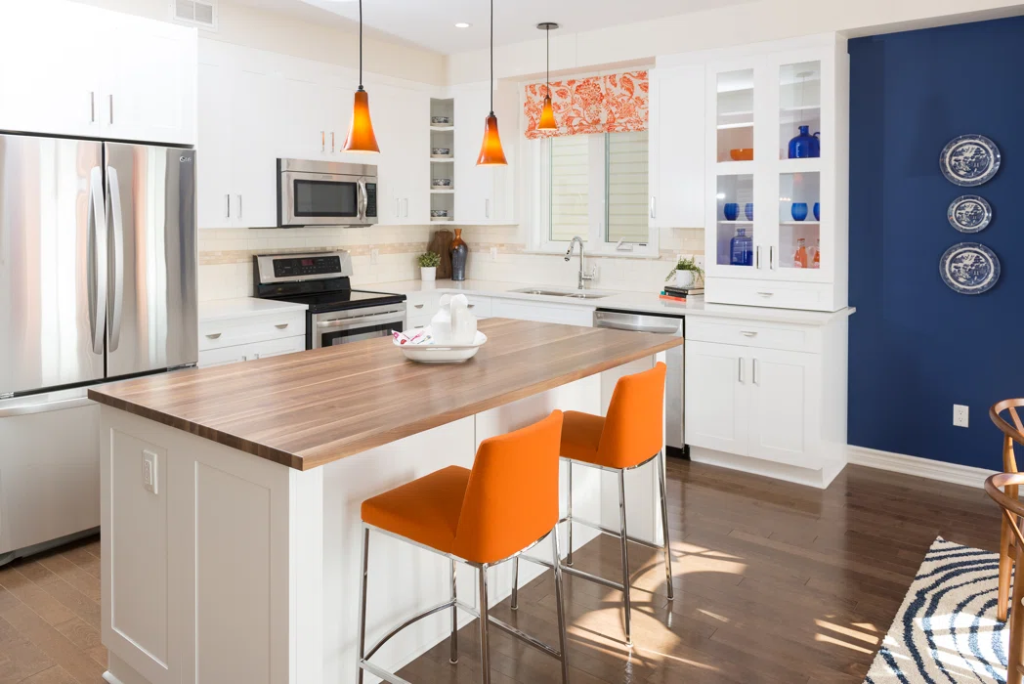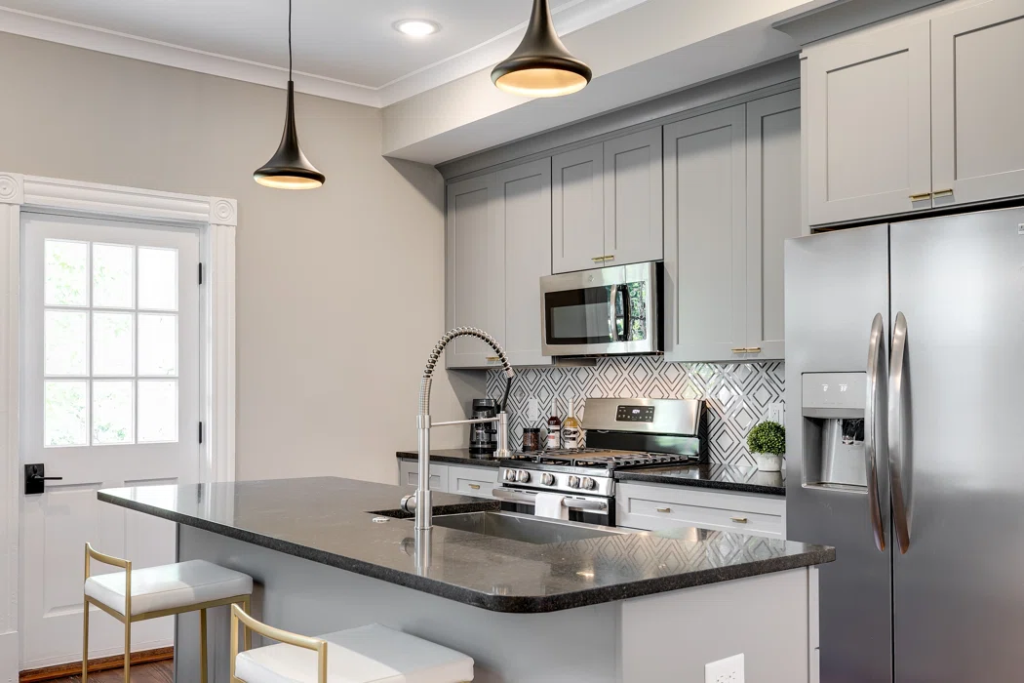What is the Perfect Paint Finish for the Kitchen?
The best paint finish for the kitchen is either satin or semi-gloss paint. More often than not, a satin finish is ideally used for the walls while the semi-gloss finish works well in woodworks or cabinets. Using paint finishes other than these two makes it a challenge to maintain the surfaces of the area considering it is high in traffic. As a space often used for cooking, cleaning, and washing, satin and semi-gloss make the material last longer and the space more cohesive.
How to Determine the Paint Finish?


The different paint finishes vary in the amount of light they absorb and reflect. Glossy paints tend to contain higher levels of binders and resins creating a sleek and smooth finish. It acquires and reflects more light throughout the room. This means that it can work on walls and even wood surfaces that three layers of paint are enough to conceal and cover the surface. On the other hand, matte paints are rather flat in sheen resulting in alleviated durability. Since they contain lower levels of binders and resins, the pigment is then mixed on a higher note.
The first step to determining the paint finish for every surface of the kitchen is knowing the activities they are associated with. This way, you get to know how to make them last longer on the walls, ceilings, cabinets, and even furniture. Each of these is exposed to either moisture or dust that makes them susceptible to chipping or peeling. Considering that the kitchen is a high-traffic area, one must be well–aware of the right type of finish to use. When it is time to upgrade the paint job of the surfaces in the kitchen, ensure that the surfaces are prepped and primed for it to absorb the paint effectively.
What are the Common Paint Finishes for the Kitchen?


There are different paint finishes used in the kitchen. It all boils down to your preference of how the surface will acquire light and how it will reflect natural lighting. Knowing the variations will allow the kitchen to be more functional and sustainable considering that it is the busiest area of the house.
From matte to high-gloss, it boils down to how exposed the surface is to activities as well as to the human touch. When it comes to kitchens, the type of paint finish to be used needs to be easier to clean and maintain. This way, there is no need to do a quick repaint every now and then because of the paint wearing off. We have rounded up the common types of finishes often used for the kitchen.
Satin
Satin is the most frequently used type of paint for interior spaces. It creates this velvet sheen coverage for surfaces ideal for textured walls. In fact, they act as a concealer that blurs and hides the wall’s imperfections and blemishes. If you prefer a more simplified cleanup and maintenance method for the kitchen, satin is the best type of paint finish to work on. This works best for kitchen cabinets and ceilings.
If you want to upgrade the aesthetic of the top shelves and cabinets, working with a satin paint finish is the best way to go. Considering how they are often composed of wood, there are bumps, discolorations, stains, and blemishes. Having these drawbacks will help you decide on getting a satin finish for the cabinets.
Semi-Gloss
When it comes to the areas of the kitchen where grease and moisture accumulation is a concern, semi-gloss is what we highly recommend. If you have a vent absorbing all the cooking air diffusing throughout the space, satin paint would suffice. But, if you are depending on the natural ventilation of the windows, going with semi-gloss is the best choice. Grease and moisture stains on the walls and surfaces. Using semi-gloss will make it easier to clean and wipe off.
Aggressive scrubbing would not be a problem because the coat of semi-gloss is made durable without harming the paint finish. We highly recommend using this type of paint finish for the cooking area and the wash area. This way, there is no need to worry about the walls being stained because they can be easily cleaned without being too aggressive. Stains, on the other hand, are manageable compared to how matte paint absorbs moisture and grease.
What we love about semi-gloss paint finish is how they are not too matte and not too glossy. They work perfectly for spaces with sufficient natural lighting. Semi-gloss acquires just the right amount of light reflecting throughout the kitchen space. Imagine having your walls in cream white. It is neutral making the space warm and welcoming. More than the pigment of your preferred color, the paint finish is important too.
Eggshell
The eggshell finish is in between satin and semi-gloss but creates a rather textured finish. This type is perfect if you do not prefer making the surfaces look too flat. At first glance, you can see some similarities with the character of matte paint but it acquires more light. When it comes to durability, you can never go wrong with eggshell finish because of how they can sustain intensive cleaning but not aggressive scrubbing.
The eggshell finish can work well with ceilings, walls, and even cabinets. Its multifunctional character allows you to cancel out the flatness of the surfaces. The texture is important within a space, especially if you want to maintain the warm and inviting ambiance of the kitchen. We may be stressing out the durability of each type of paint finish but aesthetics plays significance too. The eggshell finish is often used for surfaces that are not often touched or exposed to people. This is why most people use it for ceilings. It helps in diffusing light throughout the space. At the same time, it creates a rather textured illusion.
Best Paint Finish for the Kitchen


Among the three types of paint finishes, it is a tie between satin and semi-gloss. They have proven their durability to thousands of kitchen spaces across the globe. Using these two will help you achieve the kitchen of your dreams as you upgrade its aesthetics with a fresh coat of paint. We highly suggest opting for satin for the kitchen cabinets and ceiling. For the walls, semi-gloss is off the charts. They make the surfaces look more aesthetically pleasing compared to using a matte or any other type of paint finish. It establishes a rather sustainable look for the kitchen as it manages the acquisition of natural lighting.
